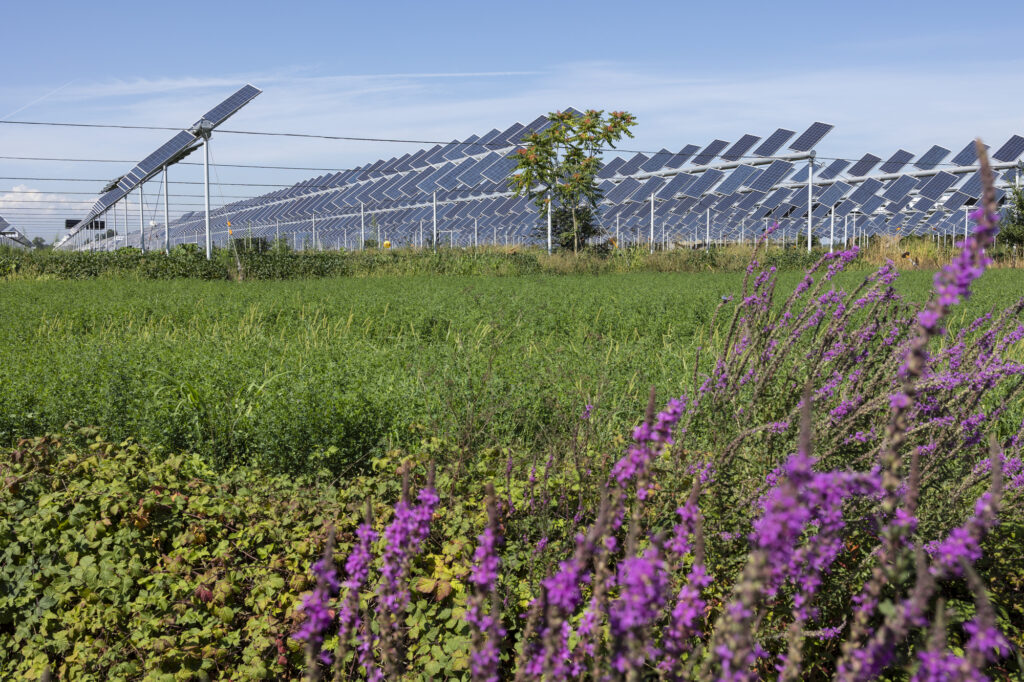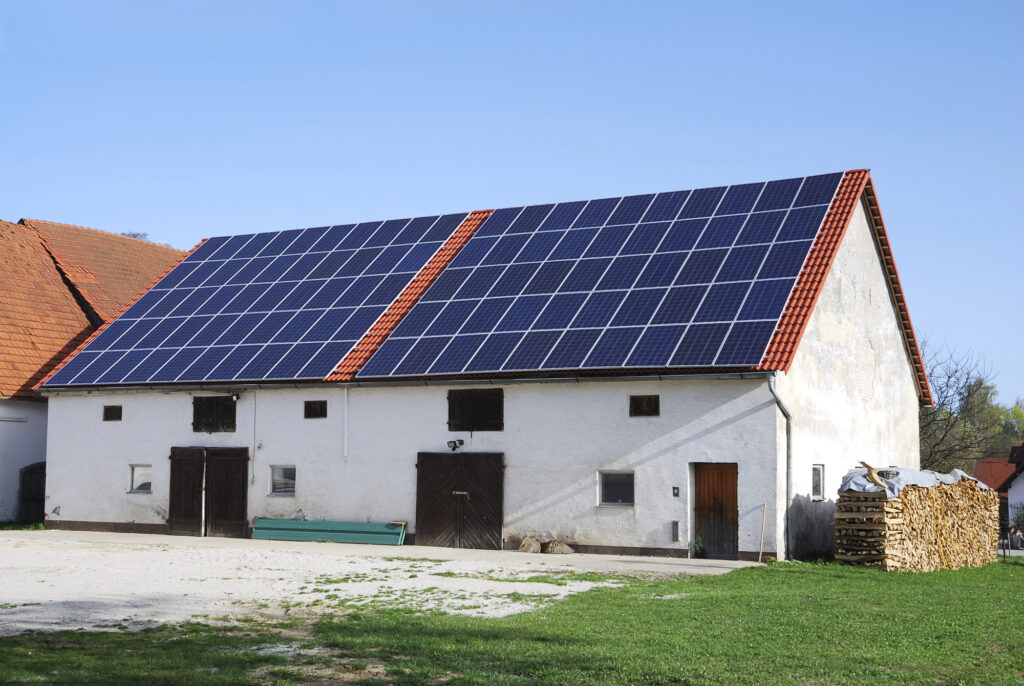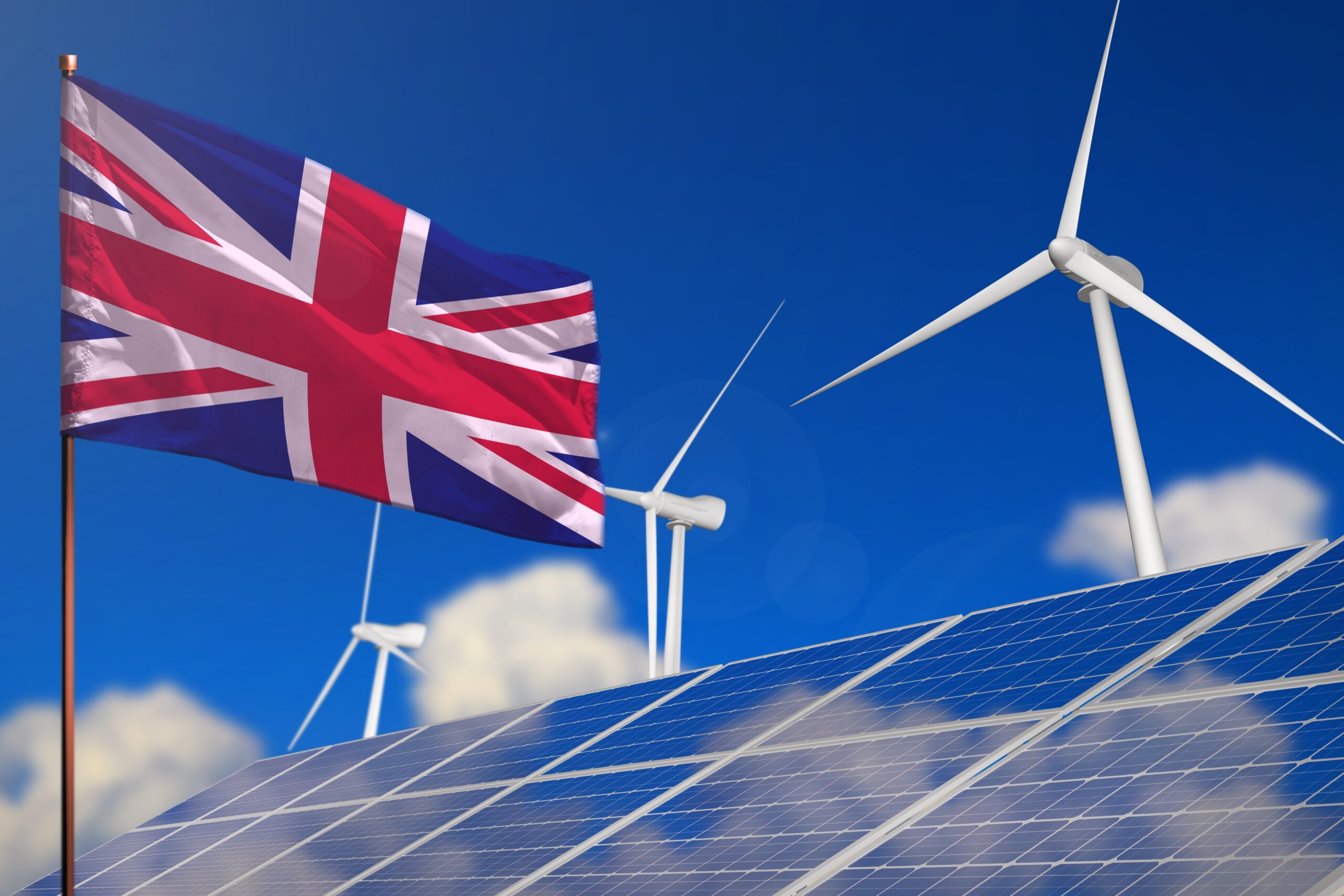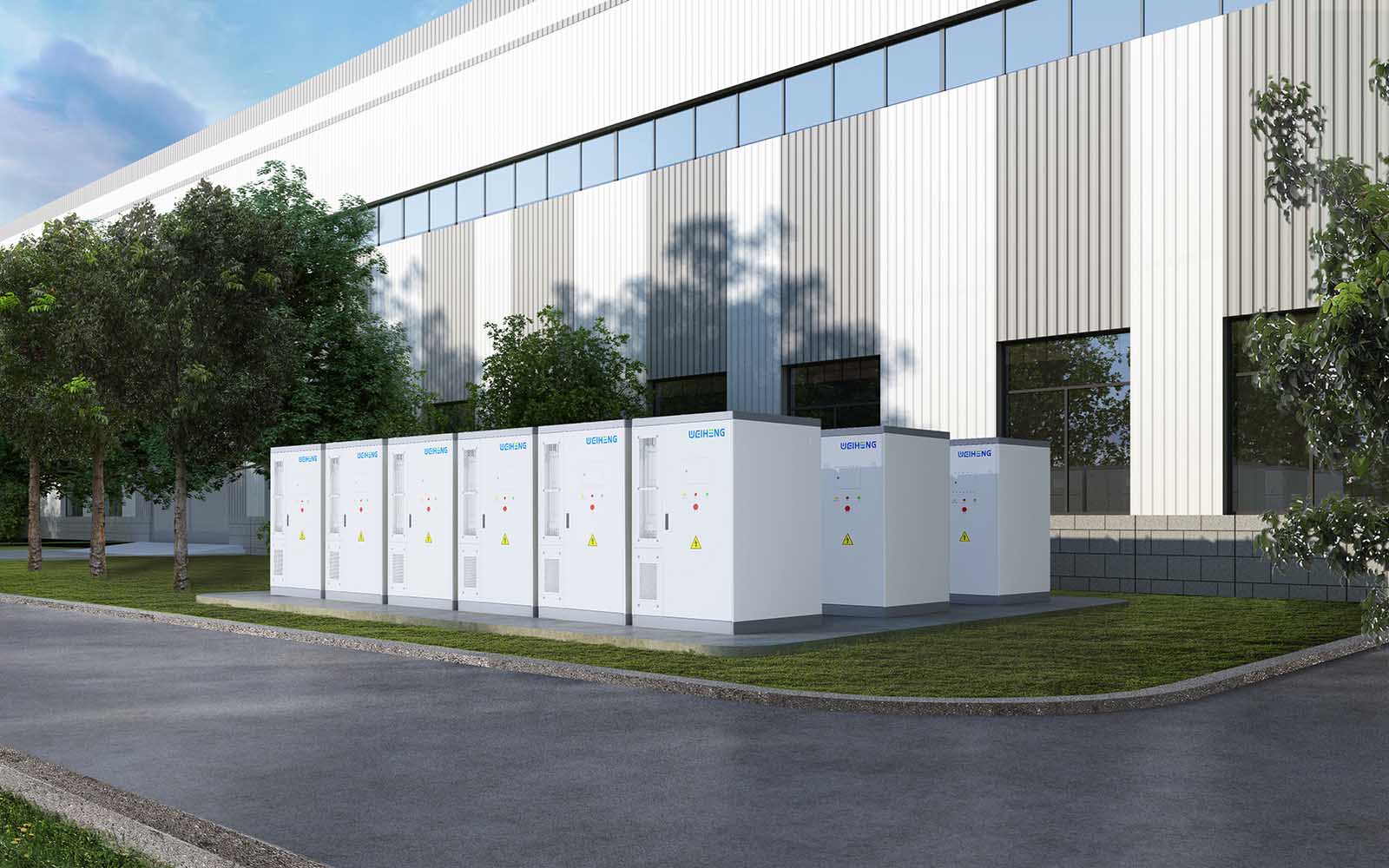
Agrivoltaics, a combination of agriculture and photovoltaics, represents an innovative and synergistic approach to land use where solar photovoltaic (PV) panels and agriculture coexist for mutual benefit. This emerging field promises to revolutionise agriculture by integrating solar energy with crop cultivation, paving the way towards a more sustainable and efficient farming future.
What are Agrivoltaics?
So what are agrivoltaics and what are they used for? Agrivoltaics is an innovative approach that marries the practices of agriculture with photovoltaic (PV) solar power technology. It is, at its most basic, the deliberate placement of solar panels above agricultural land. The fact that these panels produce electricity and shade simultaneously has various advantages for agriculture.
With this approach, the same area is used for both crop cultivation and energy production. Usually, the solar panels are placed atop tall buildings high enough for farming activities like planting and harvesting to go on uninterrupted beneath them. In places where arable land is limited, agrivoltaics maximise land use efficiency in this way.
The microclimate of the crops below is changed by the installation of solar panels, possibly improving growing circumstances. Among these are fewer hours of direct sunlight, which helps to lower leaf temperature and preserve soil moisture. The ultimate goal of agrivoltaics is to establish a mutually beneficial symbiotic relationship between farming and solar energy generation, therefore producing a comprehensive approach that increases the productivity and sustainability of the farm.
The Importance of Solar Energy Used in Farming
Solar energy integration in agriculture is continuously becoming acknowledged as a revolutionary approach to sustainable farming. Solar energy used in farming not only lessens the environmental impact of farms but also lessens their dependence on fossil fuels, bringing agricultural methods into line with international attempts to address climate change.
For agricultural operations, solar energy offers a dependable and environmentally friendly power source that can dramatically lower electricity bills. Farms may use the sun’s energy for everyday tasks like irrigation, lighting, and operating farm machinery by putting solar panels on agricultural buildings or right into the terrain. In rural locations commonly impacted by fluctuating grid supply, this guarantees energy independence, in addition to lowering operating expenses.
Solar energy also helps to fortify agricultural businesses against changes in energy costs. Agricultural solar panels allow farms to better control budget projections and lock in energy expenses in the face of growing traditional energy rates. Planning long-term and funding agricultural advances need this economic stability. Therefore, solar energy plays a vital role in contemporary agriculture that goes beyond its advantages to the environment by offering a strong basis for profitable and sustainable farming methods.

It is important to note that mounting solar panels on agricultural buildings is frequently less complicated and obtrusive than putting extensive ground-mounted systems in fields. The panels are easily accessible and do not impede the regular ground operations of farming; thus, they usually encounter fewer regulatory obstacles and can be easier to maintain.
Benefits to Farmers and the Environment
With so many benefits for farmers and the environment, agrivoltaics is a wise investment for contemporary agriculture. Among the main advantages for farmers is the capacity to produce renewable, clean energy while growing food at the same time. This dual purpose optimises land use and may result in large savings on electricity expenditures.
Agrivoltaics reduces water use and preserves soil moisture, therefore supporting sustainable land management from an environmental perspective. Because solar panels shade the soil, less water evaporates from it more frequently and in smaller amounts. This is particularly helpful in dry areas where a continual problem is water scarcity.
More biodiversity can also be encouraged by the microclimates produced beneath the panels. More plant species may be supported by these damper, cooler temperatures, which improve regional ecosystems. Agrivoltaics also contributes to a healthier world by lowering greenhouse gas emissions and boosting reliance on clean energy, therefore battling global warming. Through higher agricultural yields and lower energy costs, this symbiotic relationship between solar technology and agriculture promotes economic sustainability in addition to environmental objectives.
Challenges and Considerations of Solar Agriculture
Solar agriculture has a lot to offer, but there are certain drawbacks as well that need to be carefully handled. One of the greatest obstacles is still initial capital expenditure. Not every farm is ready to make such financial commitments without careful preparation and possible grants or subsidies, and installing agricultural solar panels can be expensive.
Furthermore essential is technical knowledge. Either farmers need to become knowledgeable about solar technology or employ experts to oversee and maintain these installations. This covers both the technical abilities required to fix and maximise solar installations as well as the best panel location to prevent too much shade that could impede crop development.
Besides, not every kind of crop will work well with agrivoltaic systems. Under shadowed conditions, light-sensitive crops could suffer, but others might flourish. It will take a lot of study and maybe some trial and error to figure out which crops work best with solar panel arrays.
There can also be legal obstacles to overcome. Agrivoltaic project viability can be greatly impacted by the wide range of zoning rules, land-use restrictions, and solar incentive programmes. It takes effort and maybe legal advice to negotiate this legal terrain and make sure that all local, regional, and national laws are followed.
Thus, to guarantee that the combination of photovoltaics with agriculture results in a profitable and sustainable future, meticulous consideration of these aspects is necessary for the successful installation of an agrivoltaic system.
eCactus Solar UK: Enhancing Agrivoltaic Solutions
Battery Energy Storage Systems (BESS) are eCactus Solar UK’s specialty; they are perfect for the particular needs of agrivoltaic systems. Our products are made to ensure that solar energy gathered during the sunniest part of the day is effectively conserved and made available for usage at night or during less sunny times. Keeping a steady electricity supply, optimising solar panel performance, and raising the general economic feasibility of solar investments in agriculture all depend on this capacity.
Farms can get more energy independence, sustainability, and a dependable, reasonably priced power solution designed specifically for the agricultural industry by integrating eCactus Solar’s technologies.
In summary, agrivoltaics are a revolutionary technology that has the potential to completely change the face of contemporary agriculture. This creative approach improves agricultural productivity and sustainability while also encouraging environmental care by fusing solar energy generation with crop farming.
In addition, agrivoltaic system adoption provides farmers with a route to environmental and economic resilience when backed by developments and solutions from businesses like eCactus Solar UK. Agrivoltaics promises a cleaner and more productive future for the global agricultural community as technology develops and awareness grows. It is positioned to become a cornerstone of sustainable farming.







